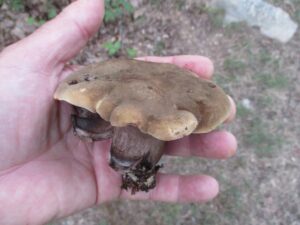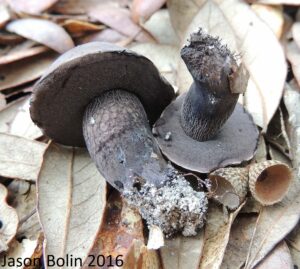Primary Stem Color is: 5- Black, Dark Brown, or Dark Gray
Showing 49–62 of 62 results
-
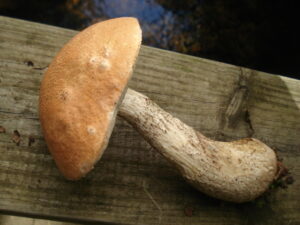
Leccinum versipelle (“Orange Birch Bolete”)
Orange cap ages to pinkish tan & has tissue bits on the edge. White cap flesh stains red (esp. by stem), resolving to purple- or blackish-gray.
Read more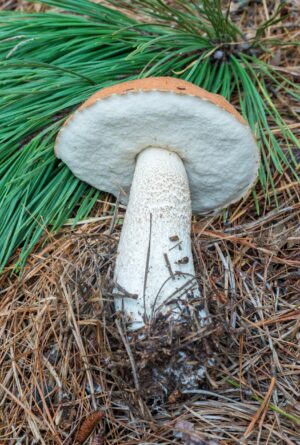
Leccinum vulpinum (placeholder for coniferous mates)
Bright orange/red cap. White pores age toward brown, & stain brown or red-brown. Flesh stains red, darkening to purple-gray or black.
Read more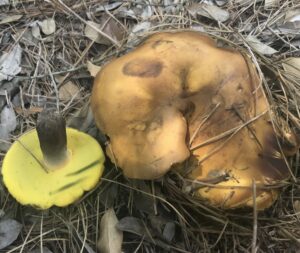
Phlebopus beniensis
Tropical. Dark grayish stem is yellow high, ages yellower, and can have a rough texture. Yellow pores age darker and bruise greenish blue. White to very pale yellow flesh bruises very slowly.
Read more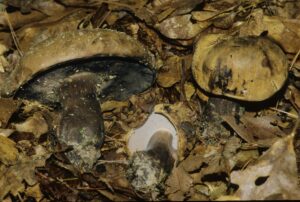
Porphyrellus nebulosus
Gray-to-brown cap stains darker & often cracks w/age. Yellow pores age to brown & then red-brown, staining blackish-brown.
Read more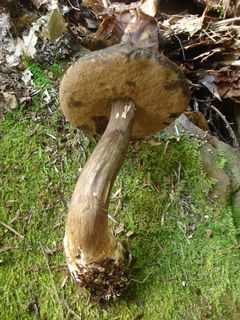
Porphyrellus porphyrosporus (“Dusky Bolete”)
Dark brown stem, often w/white base that can smell of chlorine. Dark red- to black-brown pores stain green-blue but resolve to brown. Odd smell.
Read more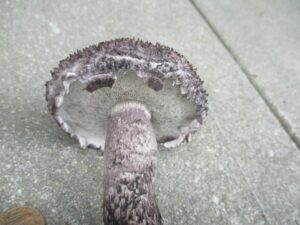
Strobilomyces confusus (“Old Man of the Woods”)
Cap has pointier, more erect scales than the other Old Men. Flesh stains orange-red to orange. Pores start white but quickly age toward gray-black.
Read more
Strobilomyces dryophilus (“Old Man of the Woods”)
Cap has grayish pink or darker scales on white base. White flesh stains orange/pink before slowly darkening. Lighter, shaggy stem is often stringy & useless. Likes oak.
Read more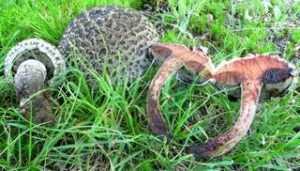
Strobilomyces strobilaceus (“Old Man of the Woods”)
Cap is completely distinctive black scales on white base. Flesh stains pink. Stem is often stringy & useless.
Read more
Suillus bresadolae var. flavogriseus (“Bearded Bolete”)
White/yellow scales, esp. when young, on sticky yellowish cap. Grows w/larch. Only known from Newfoundland.
Read more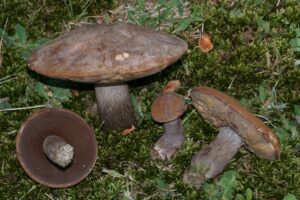
Sutorius eximius (“Lilac Brown Bolete”)
Chocolate- to purple-brown pores stain dark brown. Purple- to gray-brown cap. White cap flesh slowly stains purple-, red-, or gray-brown.
Read more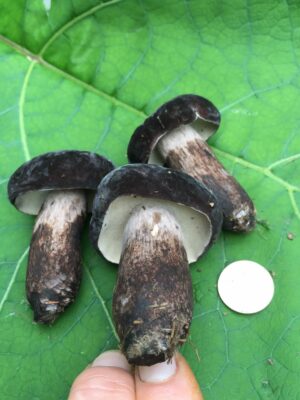
Tylopilus alboater (“Black Velvet Bolete”)
Velvety black cap. Oft-swollen or bulbous stem echoes the cap color. Pores & white cap flesh usually stain pink, then become dark.
Read more
Tylopilus atratus (“False Black Velvet Bolete”)
Think “T. alboater but under hemlock.” Gray to black velvety cap often cracks even when young. White cap flesh slowly blackens w/no red phase.
